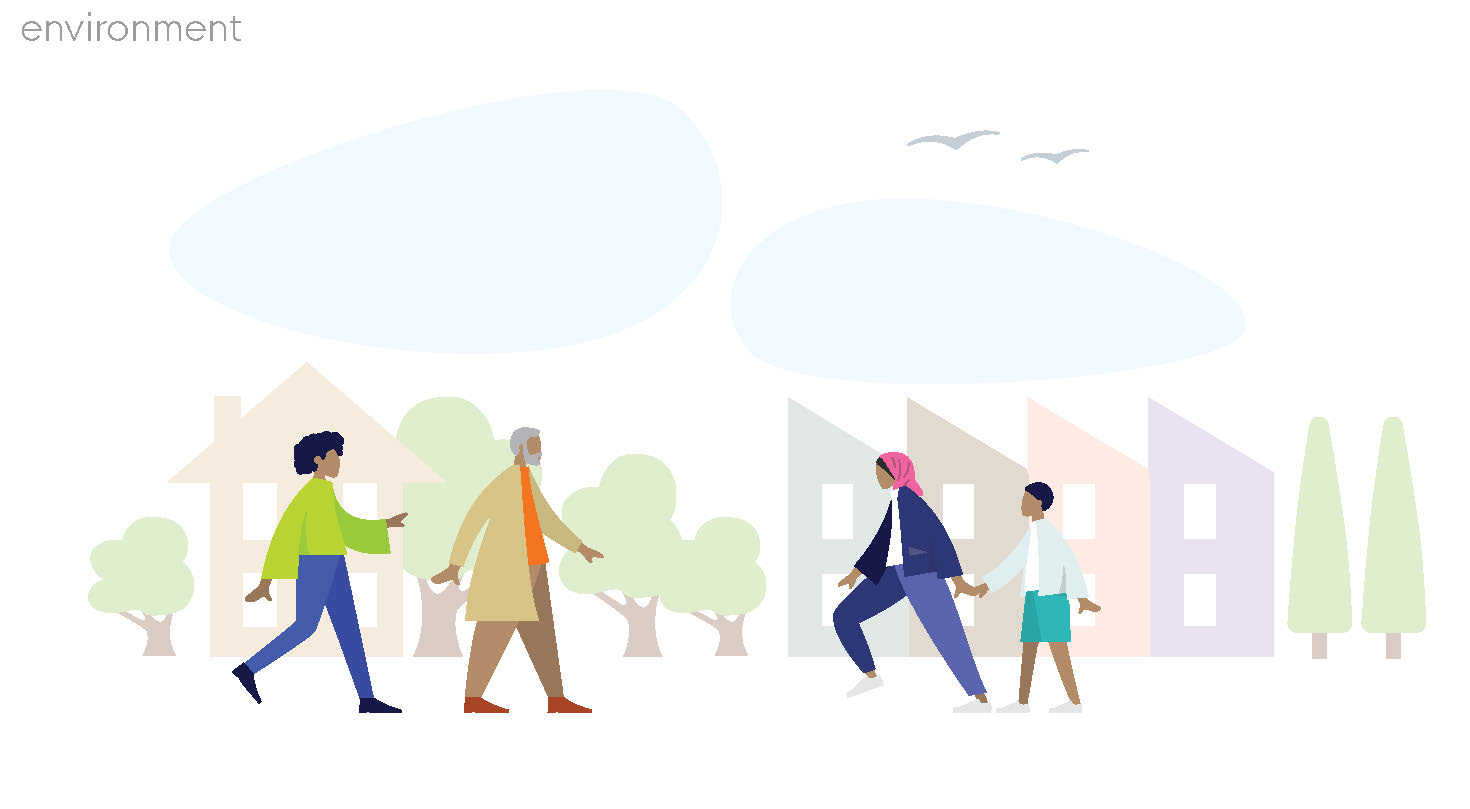Environment
Our report Drivers of wellbeing inequalities showed that the lower your wellbeing, the bigger the impact access to green and blue (blue is rivers, canals, seaside) spaces, waterscapes, and heritage makes. Greater engagement in heritage activities and the use of green space for health, exercise or recreation is associated with lower inequality in life satisfaction in local areas. There are practice examples of interventions that work with different communities to improve wellbeing through natural environments on land and water.
Recent surveys in England have found that 95% of adults think it is important to look after heritage buildings; 73% had visited a heritage site over twelve months; over 315,000 people were heritage volunteers; and 80% of people thought that local heritage makes their area a better place to live (DCMS, 2015; Historic England, 2017).
This section looks at the evidence on the broader wellbeing impacts of the environment and heritage on wellbeing.
You can learn more on the Place and community page to learn more about wellbeing impacts on heritage and environment in local communities.
People
-
Nancy Hey
What impact does heritage have on our wellbeing?
The Centre carried out a scoping review in 2019 that set out the state of the evidence on the impact of interacting with heritage on our wellbeing. Evidence shows that historic places, assets – and associated activities and interventions – can benefit the wellbeing of individuals and communities.
The positive impacts on individual wellbeing include outcomes such as increased confidence, social connectivity and life satisfaction. There is also evidence of positive effects on community wellbeing, including outcomes on social relationships, sense of belonging, pride of place, ownership and collective empowerment.
There are evidence gaps on research into:
- the experiences within and across different groups, including socioeconomic and protected characteristics
- on heritage assets in a wider range of regions, including rural and coastal areas.
Potential negative impacts of interventions appear to be related to how well the design and delivery of interventions considered the needs of specific individuals and groups.
How does our environment affect our wellbeing?
Air quality and wellbeing
Evidence suggests that air and noise quality have an impact on individual wellbeing. A 2015 study using data from the European Social Survey found that even in cases of relatively low levels of air pollution, in addition to the effects on physical health, exposure had a negative effect on subjective assessments of wellbeing. A more recent study found that this link held, even when controlling for all the differences economic, social and environmental conditions across neighbourhoods.




